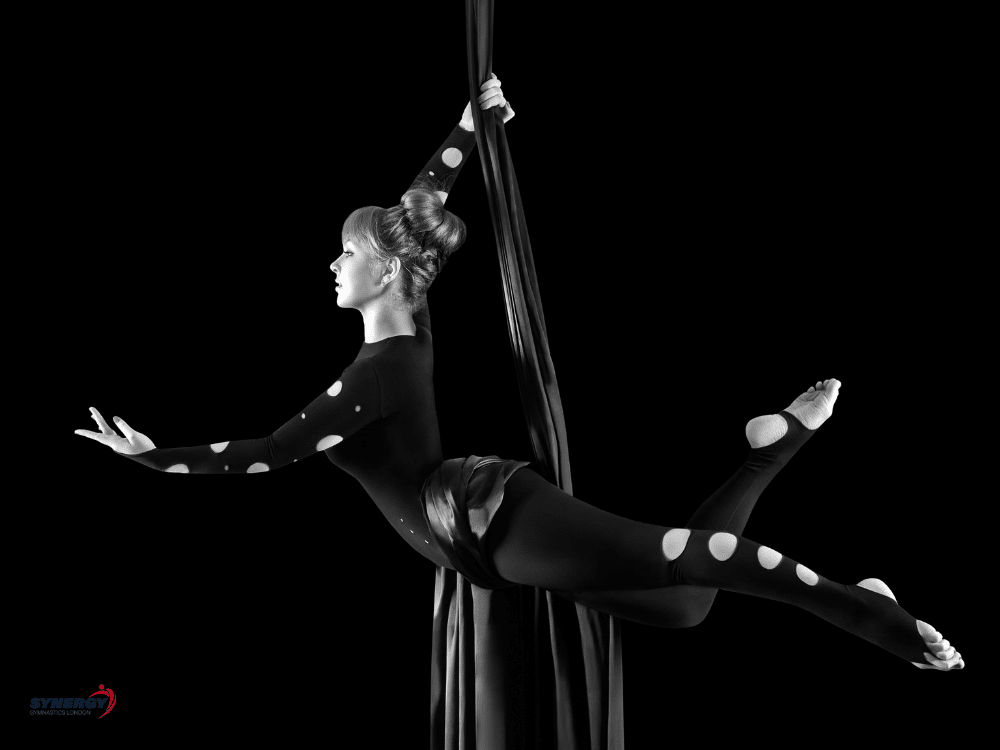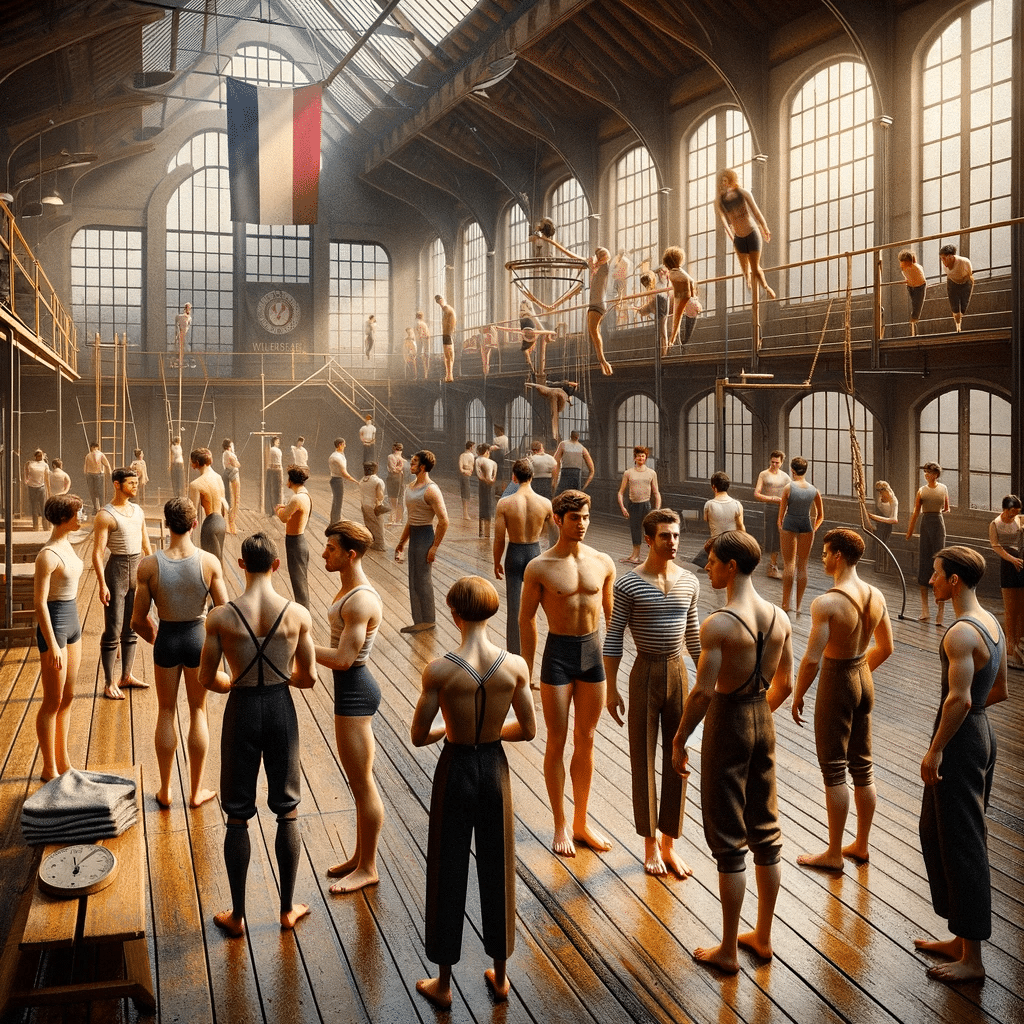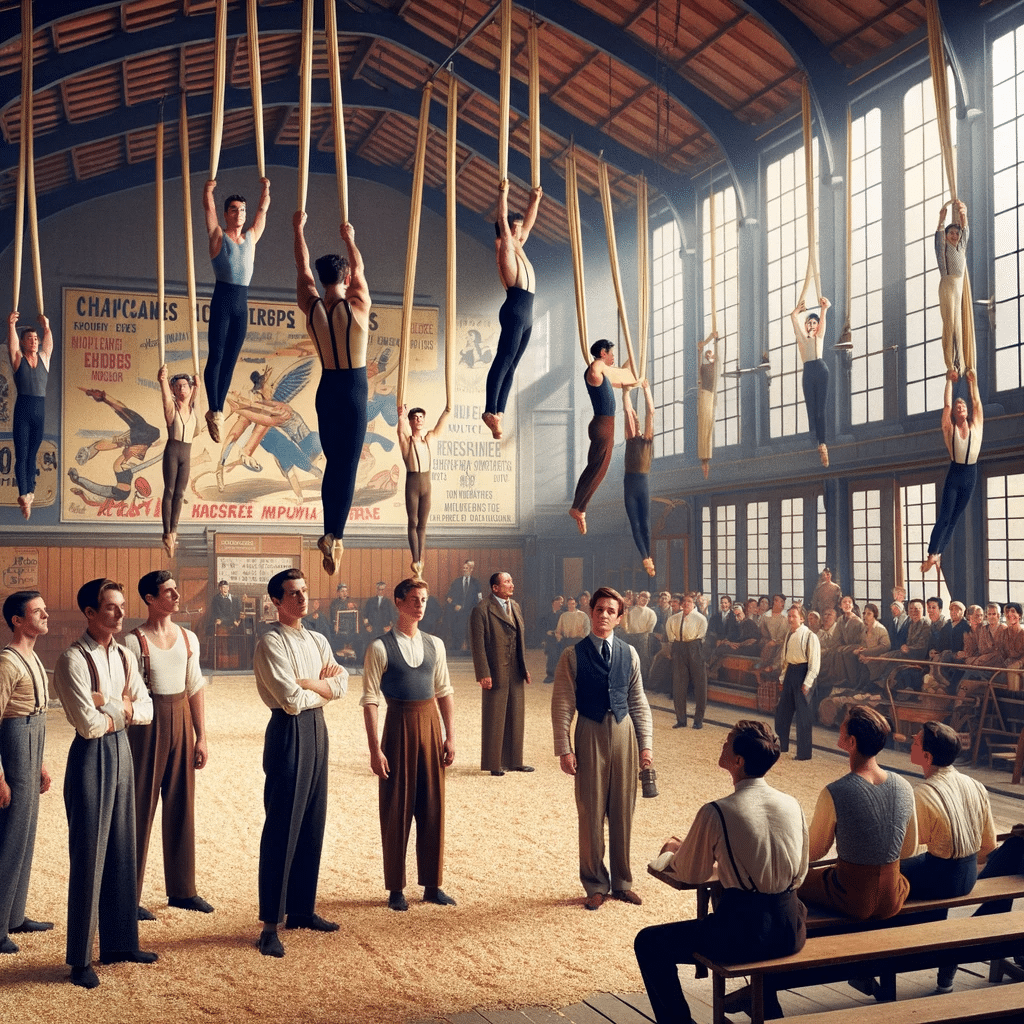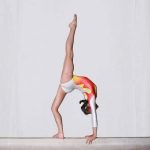Aerial silks, the elegant and dynamic performance art where acrobats execute feats of strength and flexibility while suspended from fabric, has a history as rich and layered as the material itself. Tracing its origins back to a French circus school in the late 1950s, aerial silks began not just as an act of entertainment but as a discipline that challenged the conventions of traditional circus arts.

This unique form of expression, initially developed to train flexibility and grace in the air, soon captivated audiences with its potential for dramatic and emotive storytelling. From these early beginnings, aerial silks have undergone a remarkable transformation, evolving into a widely recognized and practiced art form across the globe.
In this article, we will delve into the multifaceted history of aerial silks, from the innovative spirit of its early adopters in France to its present-day incarnations. We’ll uncover how this once-obscure practice grew to shape the world of performance art and how its legacy continues to stretch the limits of imagination and physicality.
Origins of Aerial Silks
The story of aerial performance is as ancient as it is diverse, with early records indicating forms of aerial acrobatics being part of traditional Chinese circuses over 2,000 years ago. However, the aerial silks as we know them today have a much more modern inception. The roots can be traced back to the mid-20th century when circus artists began experimenting with new ways to captivate audiences, seeking a blend of dance, flexibility, and airborne artistry.

In traditional circus, aerial acts were predominantly performed on rigid apparatuses like the trapeze or the high wire. In contrast, aerial silks introduced a fluid, fabric-based apparatus, allowing for a greater range of movement and expression.
This shift began in the late 1950s at a French circus school, where instructors and students explored the use of fabric hung from the ceiling as a tool for an entirely new type of performance. The fabric’s versatility allowed for wraps, falls, and suspended poses, offering a dramatic spectacle that was both ethereal and exhilarating.
The evolution of aerial silks can be attributed to a few key individuals who refined the art form and brought it to the public’s attention. One such pioneer was André Simard, a researcher and acrobatic designer for Cirque du Soleil, who is often credited with helping to develop and popularize aerial silks in the 1990s. Simard’s work provided the technical foundation and artistic vision that transformed aerial silks into the breathtaking phenomenon enjoyed in contemporary performances.
Simard, alongside other circus performers and instructors, continued to push the boundaries of what could be achieved with the fabric, experimenting with different types of materials, grips, and rigging techniques. These innovators not only established the foundational moves of aerial silks but also inspired a wave of performers who would continue to evolve the art form, blending athleticism with artistry, and in doing so, ensuring that aerial silks became a permanent fixture in the panorama of modern performance art.

Cirque du Soleil and Aerial Silks
Cirque du Soleil, the renowned Canadian entertainment company, is pivotal in the ascent of aerial silks from a niche circus skill to a mainstream spectacle. With its innovative approach to circus arts, devoid of animal acts and rooted in rich storytelling and character-driven performances, Cirque du Soleil introduced aerial silks to a global audience.
The company’s commitment to blending circus tradition with theatrical extravagance allowed aerial silks to flourish as a centerpiece of many productions, enchanting audiences with its combination of danger, beauty, and awe-inspiring athleticism.
Changing the Face of Modern Circus Performances
The introduction of aerial silks has had a transformative effect on the landscape of modern circus arts. Unlike traditional aerial disciplines, silks brought a new level of versatility and dramatic impact to performances. The fluidity of the fabric combined with the creative potential of choreography has enabled a more expressive and narrative-driven form of aerial art. Performers could now tell stories not just with their bodies but with the very apparatus they were using, allowing for a seamless integration of performance and storytelling.

Notable Aerial Silk Performances
Several aerial silk performances stand out for their innovation and cultural impact. The spellbinding acts in shows like “Quidam” and “O” by Cirque du Soleil have left indelible marks on the hearts of viewers, showcasing the emotional depth and physical prowess that aerial silks could convey. These performances have not only been pivotal in solidifying the popularity of aerial silks but have also inspired a new generation of artists and acrobats to explore the limits of their creativity and physicality.
The iconic solo aerial silk act in Cirque du Soleil’s “Varekai,” which tells a story of rebirth and transformation, has been particularly influential, demonstrating the unique narrative power of the medium.
The ripple effect of these and other groundbreaking performances has been significant, leading to aerial silks being adopted in a variety of contexts beyond the circus tent, including stage productions, live concerts, and even competitive fitness arenas. The legacy of these performances is a testament to the enduring allure of aerial silks and their capacity to redefine the boundaries of performance art.
Aerial Silks for Fitness
Aerial silks have transcended the boundaries of performance art, firmly establishing themselves within the fitness and hobbyist realms. Fitness enthusiasts have embraced aerial silks for their ability to improve core strength, flexibility, and overall body conditioning. The full-body workout that aerial silks provide, coupled with the exhilaration of hanging and performing tricks several feet off the ground, has led to a surge in aerial fitness studios. Hobbyists, too, find in aerial silks a creative outlet that challenges both mind and body, often building communities around local studios and workshops dedicated to the practice.
Aerial Silks and Technology
Technology and innovation are playing a significant role in the evolution of aerial silks. Advances in fabric technology have led to the development of more durable and safer materials, allowing performers to push the limits of complexity in their routines. Rigging techniques have also become more sophisticated, with automated systems enabling dynamic movements and transitions previously not possible. Additionally, virtual reality and other digital mediums are opening up new avenues for training, allowing students to learn and visualize routines in a 3D space before attempting them in the air.
Global Reach and Cultural Significance
The global reach of aerial silks is a reflection of its versatility and appeal across cultural boundaries. As an art form, it has been adopted and adapted by different countries, each infusing it with its unique cultural essence. Aerial silks have become a staple in international circus festivals, dance performances, and even corporate events, illustrating the art form’s versatility.
This global proliferation has not only elevated aerial silks to a respected art form but has also fostered a cultural exchange, as artists from various backgrounds share techniques, stories, and experiences, enriching the practice and inspiring innovation.
The cultural significance of aerial silks is also evident in its inclusivity and the empowerment it offers to practitioners. As a discipline that celebrates physicality and artistry regardless of background, aerial silks have become a symbol of expression and strength for many, providing a platform for personal growth and community building.
Are you interested in trying Aerial Silks? Find out more about the Aerial Silks classes we run at Synergy Gymnastics London.
Frequently Asked Questions
What is the point of aerial silks?
Aerial Silks is an excellent way to increase fitness, flexibility and strength. For those wishing to take the discipline further, the performance element of Aerial Silks is visually stunning and very creative.
Which is harder aerial silks or pole?
Both Aerial Silks and Pole require good upper body strength, concentration and discipline. Pole uses more leg, glutes and core compared to silks however silks are usually higher and therefore more climbing strength. There’s not much to split the two other than personal preference and suitability.
Why were aerial silks invented?
It is widely accepted that Silks were developed for artistic performance during the 1950s. Once the health benefits of practicing silks became apparent, it developed into a popular form of exercise.
What age should you start aerial silks?
We accept students into our aerial silks classes from eight years upwards. However with the right level of maturity and strength it is possible for children to start younger than this. There is no right or wrong age to start, the most important thing is that you do start!
- How to Do a Back Handspring: Complete Step-by-Step GuideLearning how to do a back handspring is an exciting milestone for any gymnast. It builds confidence, agility, and forms the foundation for advanced tumbling… Read more: How to Do a Back Handspring: Complete Step-by-Step Guide
- How To Get Over a Mental Block In Gymnastics: A Complete GuideGymnastics is a sport that requires not only physical strength and skill but also mental strength. When a gymnast feels like they cannot attempt a… Read more: How To Get Over a Mental Block In Gymnastics: A Complete Guide
- The Best Leotard for Girls in 2025: What to Look ForFinding an ideal leotard for girls isn’t just about picking a dazzling design that sparkles (although it does help!). The leotard has to fit perfectly,… Read more: The Best Leotard for Girls in 2025: What to Look For
- The Best Gymnastics Shorts (Our Top Picks)The best gymnastics shorts are designed to be worn over the top of a leotard providing additional coverage around the upper legs, whilst allowing gymnasts… Read more: The Best Gymnastics Shorts (Our Top Picks)
- Decathlon Leotards – Are They Any Good?If you’re in the market for a new leotard, you may be wondering if Decathlon leotards are any good considering the low cost of their… Read more: Decathlon Leotards – Are They Any Good?
- A Complete Guide to Gymnastics Hand RipsAre you tired of dealing with painful gymnastics rips on your hands from training? Look no further – this article offers a comprehensive approach to… Read more: A Complete Guide to Gymnastics Hand Rips






